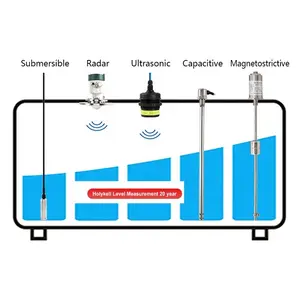Introduction to Water Tank Level Sensor
A water tank level sensor is an essential device designed to monitor and manage the water levels in tanks efficiently. This innovative technology ensures that users can keep track of their water supply, preventing overflow and shortages. By providing real-time data, these sensors are invaluable in various applications, from residential to industrial setups.
Types of Water Tank Level Sensor
Water tank level sensors come in various types, each suited for specific applications. Understanding the different types can help in selecting the right sensor for your needs.
- Ultrasonic Sensors: Utilize sound waves to measure the distance to the water surface.
- Float Sensors: Simple devices that use a buoyant float to indicate water level based on its position.
- Capacitance Sensors: Measure the change in capacitance caused by the water level, suitable for plastic or non-metal tanks.
- Radar Sensors: Employ electromagnetic waves for precise level measurement, effective in challenging conditions.
Applications of Water Tank Level Sensor
Water tank level sensors find applications across various sectors due to their versatility. Here are some primary areas where these sensors are utilized:
- Residential Use: Monitoring water levels in domestic tanks for efficient management without manual checks.
- Agricultural Applications: Ensuring adequate water supply for irrigation systems to improve crop yield.
- Industrial Settings: Monitoring large water tanks in manufacturing plants, aiding in process automation.
- Municipal Water Supply: Managing the water levels in treatment facilities and reservoirs for effective distribution.
Features and Advantages of Water Tank Level Sensor
The features of water tank level sensors contribute significantly to their advantages, making them an essential component for water management.
- Real-Time Monitoring: Provides immediate data on water levels, allowing for proactive management.
- Remote Access: Many sensors come with connectivity options that enable monitoring from any location via smartphones or computers.
- Durability: Constructed from resilient materials that withstand environmental challenges, ensuring long lifespan and reliability.
- Cost-Effective: Helps in reducing water wastage and energy costs, leading to significant savings over time.
- Alerts and Notifications: Most advanced models send alerts when water levels reach critical points, ensuring timely intervention.














































